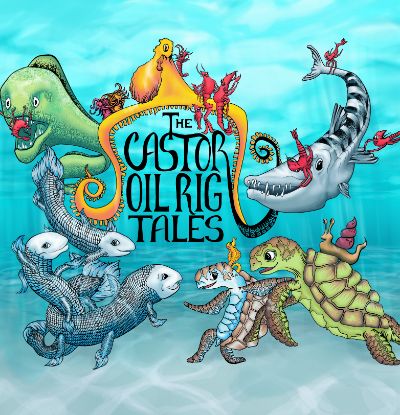Campus News
Dream job: Combining science and illustration
Ph.D. student Jessica Kendall-Bar is fascinated by how wild marine mammals sleep, and also passionate about using art to explain science.


Burning Man isn’t a place where you’d expect to find a presentation on research into the sleep patterns of marine mammals.
But the week-long extravaganza of creativity in the Black Rock Desert of Nevada is exactly where Jessica Kendall-Bar, a Ph.D. student in ecology and evolutionary biology at UC Santa Cruz, plans to screen a dreamlike, animated video she created. The film centers on her study into the similarities and differences between the sleep patterns of humans and wild marine mammals through a fantastical story of an underwater friendship between a woman and a seal.
“I think it’s a cool project,” she says simply.
But cool projects seem to be the norm for the 25-year-old Kendall-Bar. Working with her advisers, UC Santa Cruz Professors of Ecology and Evolutionary Biology Terrie Williams and Dan Costa, she is studying the way marine mammal brains can cope with both oxygen and sleep deprivation that would be harmful, and even fatal, to humans.
She’s done field research in the Black Sea in Russia and free dove in 40 feet of water in Moorea to study the behavior of 9-foot-long, 60-pound moray eels. She’s illustrated two children’s books, created an educational video to explain carbon sequestration to students she was teaching at UC Berkeley, used wood-burning tools to create custom surfboard designs, and made short underwater films of her swimming through magical worlds of kelp and seagrass. Oh, and she is fluent in French and spends parts of her summer in France.
“I’m inspired by art and its power to communicate scientific information,” says Kendall-Bar, during a Skype conversation from her cousin’s home in Avignon, France, where she is visiting. “I think my ability to lend a creative twist to this process is important.”
As a researcher, Kendall-Bar says she is fascinated by how wild marine mammals sleep, and she recently co-authored a paper with Oleg Lyamin, Jerry Siegel, Alexei Vyssotski, and Lev Mukhametov that built on research detailing how fur seals and sea lions in the family Otariidae were found to sleep with only one hemisphere of the brain at a time (like whales and dolphins) while in the water but with both hemispheres (the way humans sleep) when they are on land. The paper she co-authored showed the asymmetry in their brain activity was reflected in their eye state (whether the eyes were open or closed).
“Learning about these patterns in marine mammals can not only inform our conservation policies for protecting threatened species,” Kendall-Bar says, “but it can also teach us about the function of sleep for all mammals.” It’s especially interesting in light of statistics that show human sleep deprivation costs the United States $411 billion each year, she adds.
But the daughter of an architect and a professor of communications is also passionate about art, which she sees as a tool to explain science in ways non-scientists can understand. So, when writer Sue Partenheimer approached her about illustrating a children’s book exploring stories of creatures who make an abandoned oil rig their home, Kendall-Bar agreed, and worked on the illustrations while doing her research in Russia.
As a book illustrator and scientist, she says, she worked hard to not only portray emotions in the animals (how would a shrimp smile?) as a way to illustrate the story but also made sure the creatures were anatomically correct. The result is a children’s book filled with gorgeous and colorful drawings of an orphaned turtle, a mischievous shrimp, and a friendly octopus. The Castor Oil Rig Tales is being published by AzBukiVeri Press.
Her most recent book collaboration, however, is with Paloma Medina, a queer Ph.D. candidate at UC Santa Cruz who works in a genetics lab studying the way sex chromosomes have evolved in different animals. Funded through the Norris Center For Natural History’s art and science residency program along with local arts grants and a Kickstarter campaign, the book tells a more scientifically accurate tale of a widowed clownfish than what was shown in the iconic film, Finding Nemo, Kendall-Bar says.
In Finding Nemo, a nervous male clownfish looks after his son following the apparent death of his wife. But, in the wild, when the dominant female clownfish dies, a male will transition to female to fill that role, Kendall-Bar says. Their book, Looking for Marla, which Kendall-Bar illustrated, tells not only that story but also that of the once-male clownfish’s emotional transition into motherhood, she says.
Inspired, also, by youth workshops through the Diversity Center of Santa Cruz, the book will have its launch party this fall, Kendall-Bar says.
Meanwhile, she envisions a time when she can combine science with illustration into a lifelong career.
“To be able to teach, do art and research, that’s what I’d like,” she says.